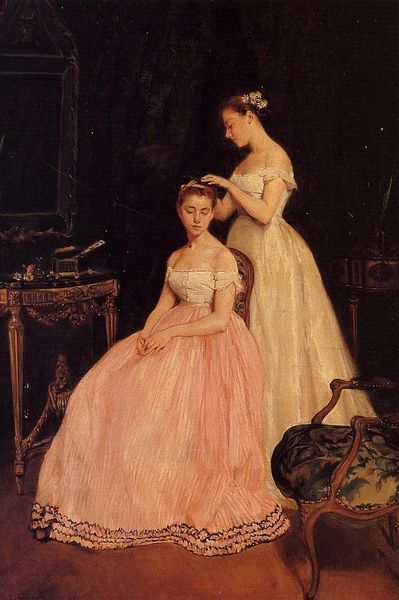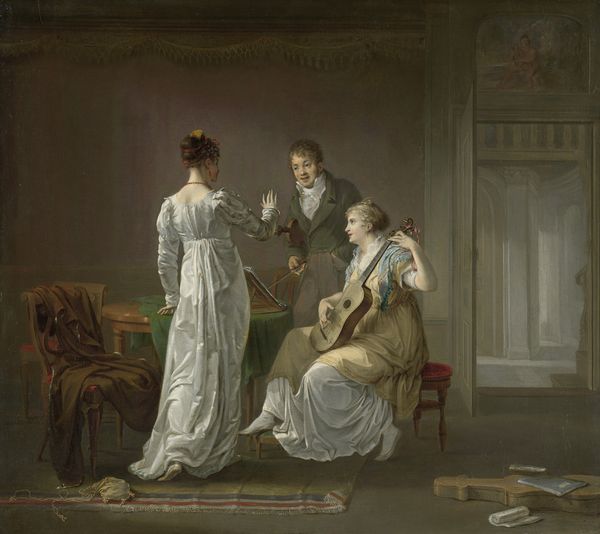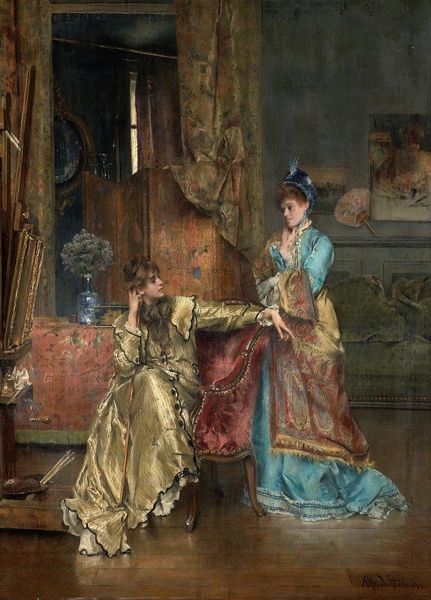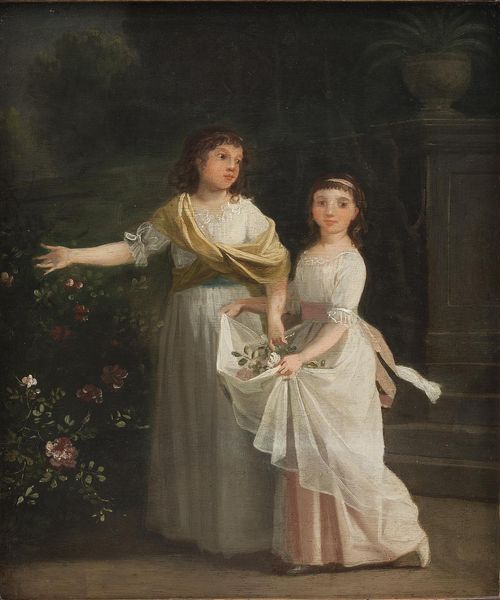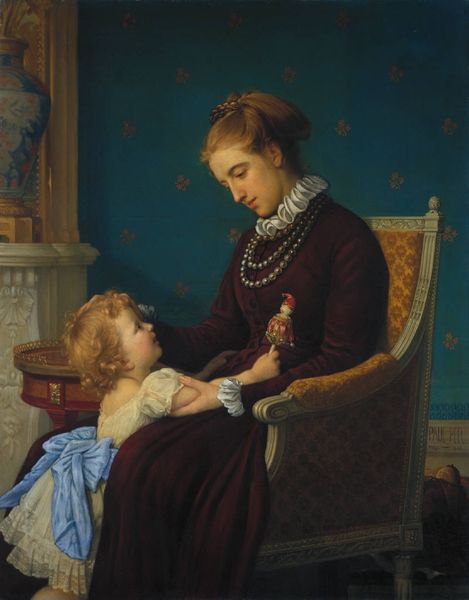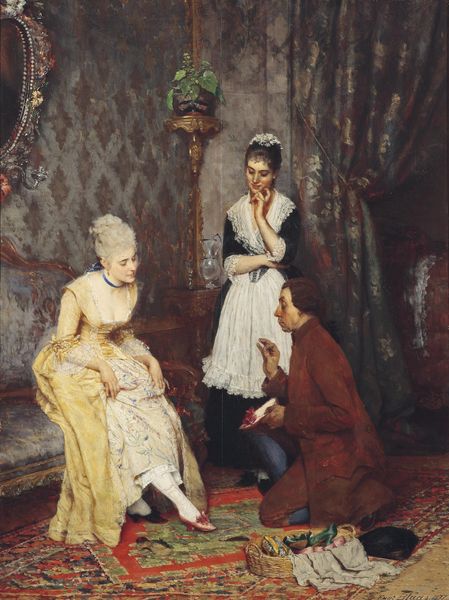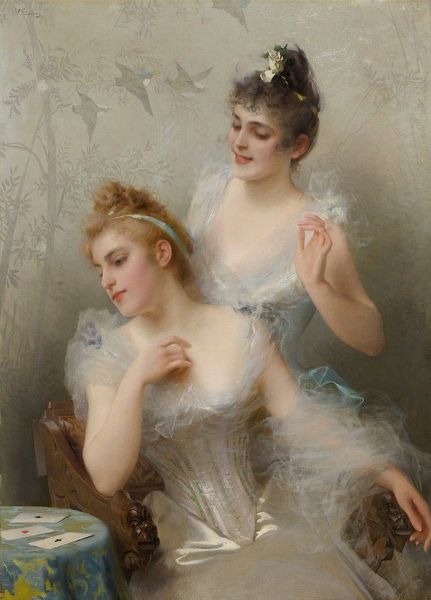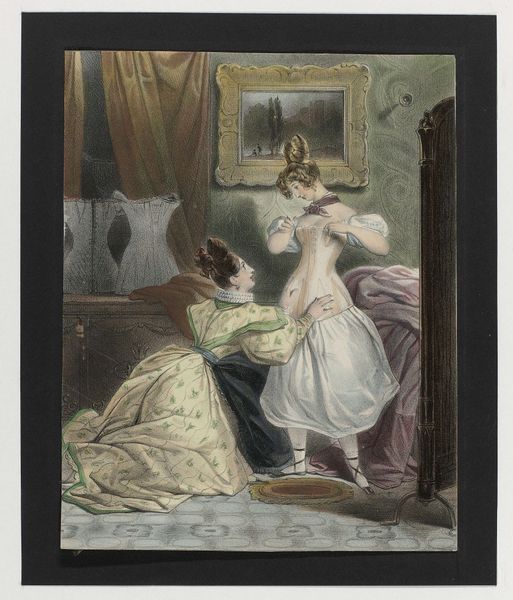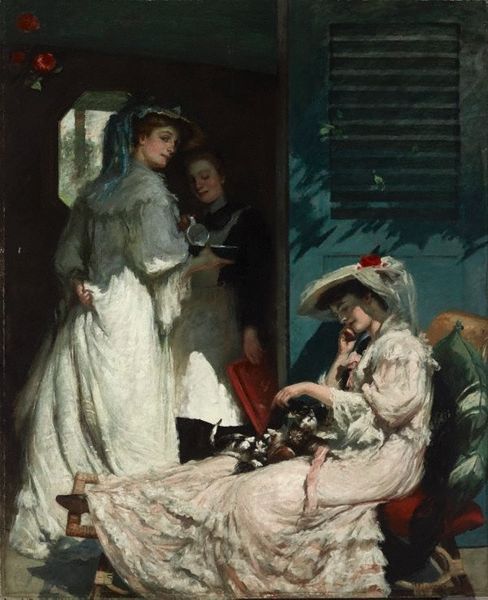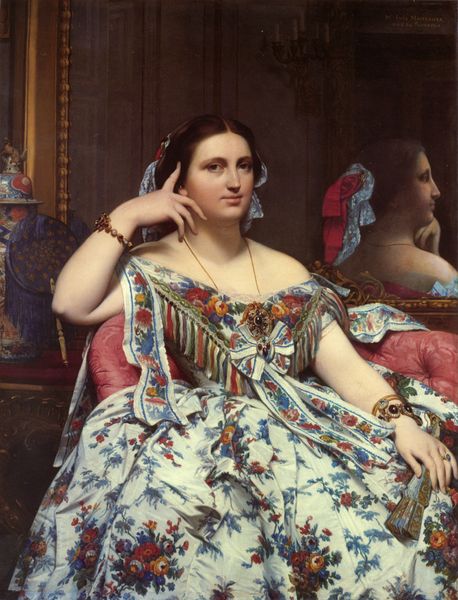
Dimensions: 97 cm (height) x 79 cm (width) (Netto)
Curator: Let's turn our attention to Henrik Olrik’s "The Bride Adorned by Her Friend", created in 1859. My initial impression is one of quiet anticipation. The cool color palette, save for the pop of red curtain, and the introspective expressions create a very subdued, almost melancholy mood. Editor: Yes, a powerful, albeit restrained scene. I’m particularly struck by the texture created with oil paints here; the silk of the wedding gown practically glows, suggesting affluence but also vulnerability. Consider the layers of fabric, the way they’re built up—reflecting the constructed nature of femininity at the time, literally built, sewn, onto the female body. Curator: That’s an interesting point. The crafting of the image itself mimics the crafting of the bride's presentation, doesn't it? This artwork belongs to the Romanticism movement, yet it portrays a domestic moment rather than a grand historical narrative, reflecting a shift in subject matter. Editor: Exactly. And look closer; who has agency here? The bride seems passive, receiving the adornment, while the friend actively adjusts the veil. The painting stages a complex relationship: the rituals of womanhood performed by women for women, yet still ultimately constrained by societal expectations and male gaze to be presented later in this attire. Curator: The accessories become quite central, the small table with, what appears to be a shawl and possibly hairpins… Objects of labor, instruments of transformation, lying next to the protagonists. Are they discarded tools or treasured elements in their work? Editor: It makes you question how much genuine support versus enforced participation this adornment signifies. What were their material circumstances, how did this event change them? Curator: It is also worth acknowledging Olrik himself, a male artist creating this intimate image of women preparing for a momentous event rooted in male dominated tradition. Editor: It presents layers of complexity. Thanks, that perspective helps us think about gender dynamics involved here, who has access to this tradition and the production of this particular kind of visual language about women. It definitely changes my initial response of what I saw.
Comments
No comments
Be the first to comment and join the conversation on the ultimate creative platform.
